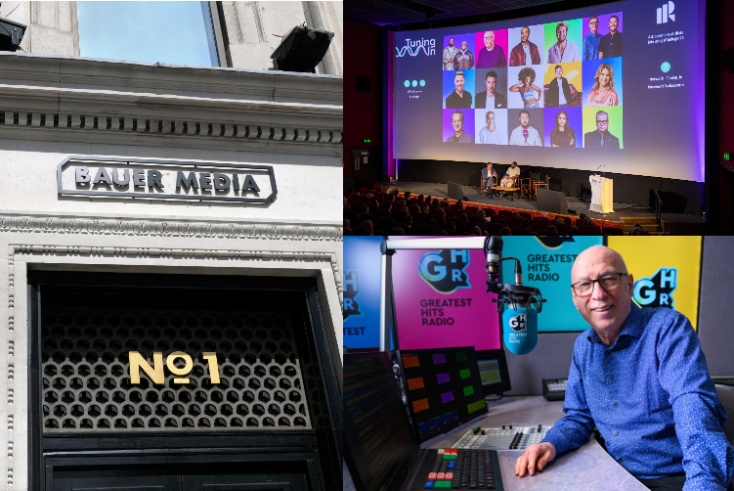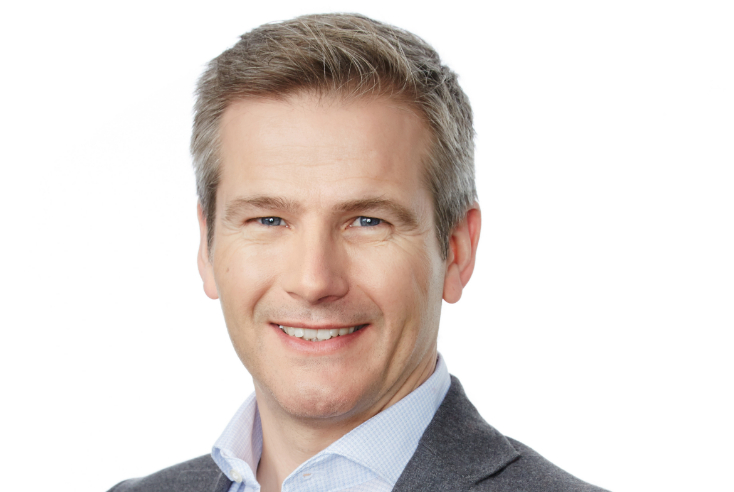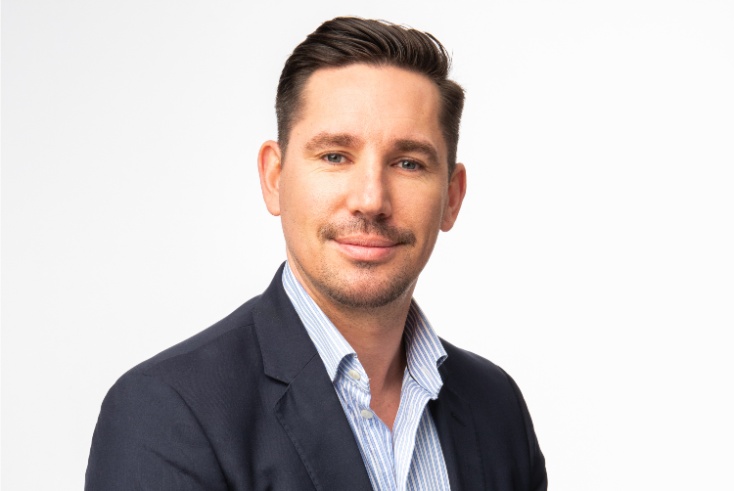Bauer Media Audio: ‘radio presenters are the original influencers’

Feature: 50 Years of Commercial Radio
Bauer Media execs explain how radio presenters have evolved into influencers and warn the radio industry against ignoring the possibilities of AI as the sector faces more change.
Radio now has all of the benefits of influencer advertising without the dangers, Bauer Media Advertising’s advertising chief tells The Media Leader.
 Simon Kilby (left), managing director of Bauer Media Advertising, describes radio presenters as “the original influencers” who have huge followings that are are “very invested in the relationship with presenter and station”.
Simon Kilby (left), managing director of Bauer Media Advertising, describes radio presenters as “the original influencers” who have huge followings that are are “very invested in the relationship with presenter and station”.
However, there is a difference between radio influencers and other influencers as Kilby explains: “The big difference between radio and social platforms is trust. Audiences and advertisers know that radio is a trusted, safe and regulated place — so it has all the key benefits of influencer advertising, without the dangers.”
Radio has been the most trusted medium in Europe for more than a decade but in that time Kilby says there has been “an explosion of ways to listen”, contributing to radio’s power and influence.
He says commercial radio can keep up its record share of listening and weekly reach by investing in talent audiences trust and relate to. Ken Bruce joining Greatest Hits Radio last year after more than 30 years at the BBC is one example of this. He also stresses learning and acting quickly, and creating new stations that cater directly to different audiences with niche tastes will be crucial to growth.
“Radio is much more than listening to a playlist — we curate content from music and information to entertainment and relevant commercial messaging, delivered through trusted relatable hosts that listeners see as friends,” he maintains.
Absolute Radio at 15: how the station instituted a ‘game changing’ decade strategy
Digital ‘supercharges’ radio
Digital audio presents the next big opportunity for both listeners and advertisers, Kilby says, simply because of the increased range in listener experiences, targeting capabilities and personalised creative.
He highlights Bauer has 30% of its listening via a connected device (10% via web/app and 20% via smart speaker), compared to the market average of 14%.
“Radio is no longer an object, it’s now a multi-platform media found in many different devices and technologies. More digital platforms have been followed with the increased consumption of radio, podcasts and the mass adoption of smart speakers. It’s enabled broadcasters to do more with content, creating new layers of connection with the audience. The same is true with advertising — we can reach audiences in more places, being targeted with planning and creative,” he explains.
Some examples of the broadcaster doing more with content include Absolute Radio’s decade stations and its “5 Words 5 Grand” smart speaker skill. Absolute, incidentally, is where Kilby started his career in audio after work in sales at The Guardian Media Group.
“The medium is constantly innovating, and in fact flourishing in the current digital transition,” he states, something SSimon Myciunka, Bauer Media Audio UK CEO, echoes.
Myciunka predicts “the virtues” of radio, like agility, connectivity, trust and effectiveness, are going to be “supercharged by digital audio advertising” which can offer more personalisation. On-demand content is also something Bauer needs to “be doing faster and bigger” in future, he adds.
This means a better offering for listeners, and better targeting capabilities, incremental reach and first-party consented data for advertisers. The latter is “a huge focus” for the business and somewhere it will be “putting an immense amount of investment this year and for the foreseeable future”, he says.
For Kilby, the priorities going forward are to continue evolving and adapting to technology to make sure Bauer is “always where its listeners are” and can engage with them in the best, most convenient ways possible, whether that’s through smart speakers, AI or its upcoming app, Rayo. Meanwhile, the radio giant wants to bring “innovative products to the ad market” to create new opportunities for brands to connect with audiences.
Context and creativity opportunities
Kilby sees radio’s position in the media ecosystem as unique, and its particular selling point is “its human heart”, which cannot be replicated by other media, where connecting with listeners in an “intimate and personal manner” is a proven “huge opportunity” for brands to reach audiences when they are engaged.
This is also “a very healthy context” for ads to be consumed in, particularly when people listen to music radio for a good mood, relief and entertainment, especially given “issues” with content from social media and tech platforms, he says.
Offering advertisers context and data-led targeting are increasingly important as radio can now offer advertisers better targeting for context, for instance knowing if someone is listening in the car or on their headphones on the way to the supermarket or home.
“Being able to drive context and relevance through identifying need states and purchase occasions through data signals is incredibly powerful. Plus, with more platforms we can offer advertisers more creative ‘360’ campaigns, helping brands to reach audiences across radio, online, mobile, print and in person,” he explains.
One misconception about radio as an advertising medium is that it can be perceived as “not as creative as other mediums”, but he emphasises there so many possible creative executions with commercial partners using on air and brand social platforms.
‘We cannot sleepwalk into being the next Blockbuster’
 Myciunka (right), who has been in the UK CEO role for just over 12 weeks, told attendees of last month’s Radiocentre’s Tuning In conference the key things for the radio industry to pay attention to in future were innovation, technology, AI and human connection.
Myciunka (right), who has been in the UK CEO role for just over 12 weeks, told attendees of last month’s Radiocentre’s Tuning In conference the key things for the radio industry to pay attention to in future were innovation, technology, AI and human connection.
He explains: “Technology has always been a friend to audio, it has helped us with accessibility and there has been lots of innovation around the audience and advertisers as well and that’s going to continue.”
The “massive growth” in smart speakers over the last few years means voice technology is getting “more embedded” in daily lives, which will continue, and creates opportunities around voice commerce for advertisers and consumers to engage more with presenters and brands.
Myciunka adds: “I’d be a fool not to mention AI. Audio is going to be no different in terms of disruption. I don’t think we can bury our heads in the sand as an industry. We don’t want to sleepwalk into being the next Blockbuster. I definitely think there’s opportunities for audiences and for advertisers.”
AI can improve experiences and engagement with audiences with AI-generated content and personalised experiences, which could also help advertisers, while reducing production costs and improving media planning. This would not mean a loss of revenue or audiences, but an overall better experience, he says.
However, radio should not forget that human connection is “at the heart of everything” and this being at “mass scale” is radio’s superpower.
However, the “continual threat” to the radio sector is not getting the amount of revenue it deserves, Myciunka thinks.
“The sector under-indexes against reach, time spent with the media, effectiveness and return on investment, trust, which is crazy at a time when there’s so much fear around disinformation, around ad fraud,” he states. “Under-indexation of investment is something that I feel sensitive around because looking at where we sit and at our market share across linear and on-demand, I don’t know whether that’s truly reflective of the investment that we get.”
On this he says he is “really looking forward” to speaking to advertising clients about how to bridge that, especially with products like the Hits Radio Network.
“We’re pretty confident that we’re going to continue to grow, and we look at all the growth we have had now that’s come from migration of listeners from the BBC, so that’s always been traditionally really difficult to target the commercial audience.”
Bauer hails ‘phenomenal’ Ken Bruce effect as Greatest Hits Radio gains 1m listeners
Bauer Media Audio UK’s radio portfolio includes KISS, Magic, Absolute Radio, Hits Radio Network, Scala Radio, Jazz FM, and Planet Rock, which according to the last Rajar figures had a combined reach of 22.8 million including partner stations.
Bauer reported record digital listening with 80% of it audiences listening via digital devices.
This is part of The Media Leader‘s series to commemorate commercial radio’s 50th anniversary. You can find the other articles in the series here.



